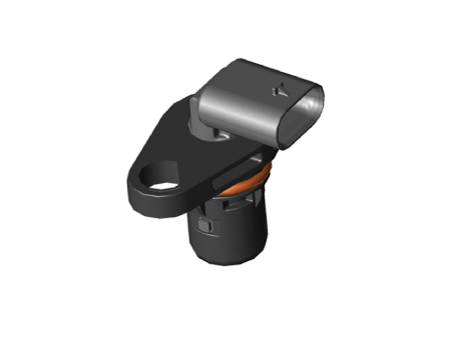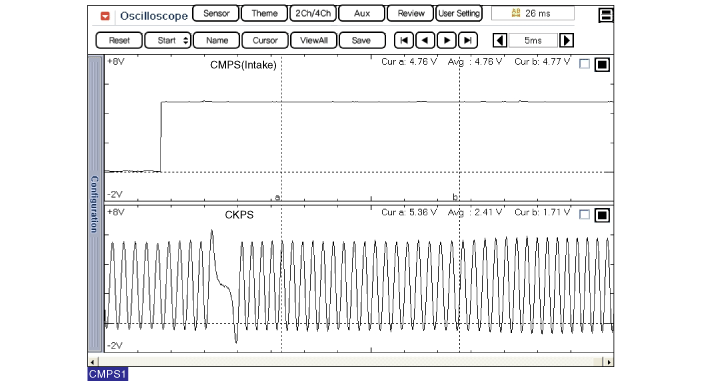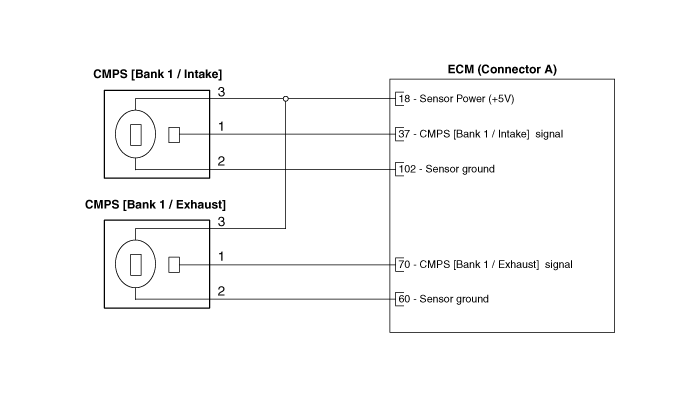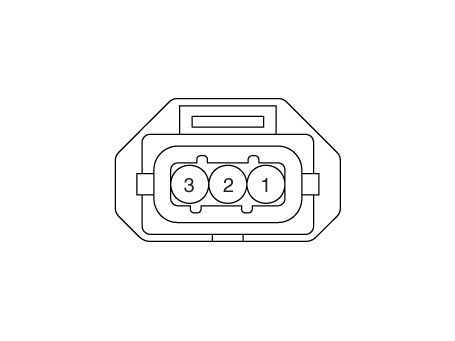Hyundai i-30: Engine Control System / Camshaft Position Sensor (CMPS)
Description and operation
Camshaft Position Sensor (CMPS) is a hall sensor and detects the camshaft position
by using a hall element.
It is related with Crankshaft Position Sensor (CKPS) and detects the piston
position of each cylinder which the CKPS can't detect.
The CMPS is installed on engine head cover and uses a target wheel installed
on the camshaft. The Cam Position sensor is a hall-effect type sensor. As the
target wheel passes the Hall sensor, the magnetic field changes in the sensor.
The sensor then switches a signal which creates a square wave.

Troubleshooting


Schematic diagrams

Harness Connector
CMPS [Bank 1 / Intake, Exhaust]

Repair procedures
|
1. |
Check the signal waveform of the CMPS and CKPS using the diagnostic
tool.
|
Specification : Refer to "Wave Form"
|
|
| •
|
DON’T remove the camshaft position sensor while the engine is
running or right after engine is turned off. The part and engine
oil is hot and can cause burns.
|
|
[Bank 1 / Intake]
|
1. |
Turn the ignition switch OFF and disconnect the battery negative (-)
terminal.
|
|
2. |
Disconnect the camshaft position sensor connector (A).
|
|
3. |
Remove the sensor after loosening the mounting bolt (B).
|
Tightening Torque :
9.8 - 11.8 N.m (1.0 - 1.2 kgf.m, 7.2 - 8.7 lb.ft)
|

|
[Bank 1 / Exhaust]
|
1. |
Turn the ignition switch OFF and disconnect the battery negative (-)
cable.
|
|
2. |
Disconnect the camshaft position sensor connector (A).
|
|
3. |
Remove the sensor after loosening the mounting bolt (B).
|
Tightening Torque :
9.8 - 11.8 N.m (1.0 - 1.2 kgf.m, 7.2 - 8.7 lb.ft)
|

|
| •
|
Install the component with the specified torques.
|
| •
|
Note that internal damage may occur when the component is dropped.
If the component has been dropped, inspect before installing.
|
|
| •
|
Apply the engine oil to the O-ring.
|
|
| •
|
Insert the sensor in the installation hole and be careful not
to damage.
|
|
| •
|
Be careful not to damage the sensor housing and the connector.
|
| •
|
Be careful not to damage the O-ring.
|
|
|
1. |
Install in the reverse order of removal.
|
Description and operation
Description
Crankshaft Position Sensor (CKPS) detects the crankshaft position and is one
of the most important sensors of the engine control system...
Description and operation
Description
Knocking is a phenomenon characterized by undesirable vibration and noise and
can cause engine damage...
Other information:
Components and components location
Components
1. Timing chain
2. Timing chain cam guide
3. Timing chain guide
4. Timing chain
tensioner arm
5. Timing chain tensioner
Repair procedures
Removal
1...
If the engine doesn't turn over
or turns over slowly
Be sure the shift lever is in N
(Neutral) or P (Park) if it is an automatic
transmission/dual clutch
transmission vehicle. The engine
starts only when the shift lever is in
N (Neutral) or P (Park)...
Categories
Opening the tailgate

■ 5 Door, Wagon

■ Fastback
read more





 Crankshaft Position Sensor (CKPS)
Crankshaft Position Sensor (CKPS) Knock Sensor (KS)
Knock Sensor (KS)





